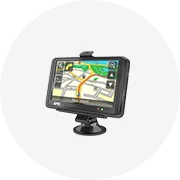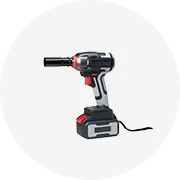Types of Injector Coding
Injector coding refers to the process of programming or configuring fuel injectors in a vehicle's engine management system. This ensures that the injectors operate optimally and are synchronized with the engine's performance requirements. Different types of injector coding cater to various vehicle models and injector types.
Manual Injector Coding
This traditional method involves using specialized tools or diagnostic scanners to enter specific parameters of fuel injectors into the ECU.
Requires: Technical expertise and knowledge of vehicle's injector specifications
OBD-II Injector Coding
Utilizes an OBD-II-compatible scanner to program fuel injectors through the standardized interface used for diagnostic communication.
Advantage: Convenient and efficient, eliminates need for complex setups
Smart Injector Coding
A modern approach using intelligent diagnostic tools with automatic coding capabilities that detect specifications of connected injectors.
Benefit: Saves time and reduces risk of errors during coding
Universal Injector Coding
Uses standardized coding procedures applicable to various vehicle makes and models, simplifying the process across multiple automotive brands.
Best for: Working with diverse vehicle fleets or multiple brands
High-Performance Injector Coding
Tailored for vehicles equipped with performance-oriented fuel injectors delivering higher flow rates and improved fuel atomization.
Focus: Precise calibration for optimal fuel delivery and maximum power output
Expert Tip: Before selecting an injector coding method, verify compatibility with your specific vehicle's ECU system. Some newer vehicles have proprietary systems that may require factory-specific diagnostic tools.
| Coding Type | Best Application | Technical Difficulty | Tools Required |
|---|---|---|---|
| Manual Coding | Older vehicles, simple ECU systems | High | Specialized diagnostic equipment |
| OBD-II Coding | Most modern vehicles (1996+) | Medium | OBD-II scanner with coding capability |
| Smart Coding | Newer vehicles with complex systems | Low | Smart diagnostic tool with automatic detection |
| Universal Coding | Multiple vehicle makes/models | Medium | Multi-brand diagnostic system |
| High-Performance | Performance/modified vehicles | Very High | Advanced ECU programming tools |
Specifications & Maintenance of Injector Coding
Injector coding specifications vary depending on the vehicle's make, model, and engine type. Understanding these specifications and proper maintenance requirements is crucial for optimal engine performance.
Key Specifications
Injector Type
Port fuel injection or direct fuel injection, each with unique coding requirements. Direct injection requires precise coding to match spray patterns with combustion chamber design.
Injector Size
Flow rate measured in cubic centimeters per minute (cc/min) must match engine's air-fuel ratio requirements. Performance engines need larger injectors than economy vehicles.
Injector Resistance
Electrical resistance of fuel injector coils must match vehicle specifications to ensure proper signal delivery from the ECU to injectors.
Spray Pattern
Different patterns (cone, multi-hole, etc.) must work with engine's combustion chamber design for effective fuel atomization and combustion.
Voltage/Current Specs
Coding may require specific voltage and current levels (e.g., 12V with 1-2 amps) to operate injectors efficiently.
Maintenance Requirements
| Maintenance Task | Frequency | Importance | Benefits |
|---|---|---|---|
| Regular Cleaning | Every 30,000 miles or when symptoms appear | High | Removes carbon deposits, restores function, improves fuel efficiency |
| High-Quality Fuel Use | Every refueling | Medium | Reduces deposits, promotes cleaner combustion |
| Fuel Filter Replacement | Every 30,000-50,000 miles | High | Prevents debris reaching injectors, ensures uninterrupted flow |
| Performance Monitoring | Ongoing | Medium | Early detection of issues (rough idling, misfires, reduced acceleration) |
| Follow Manufacturer Guidelines | As specified in manual | High | Vehicle-specific maintenance ensuring optimal performance |
Warning: Using incorrect injector specifications during coding can lead to poor fuel economy, reduced engine performance, increased emissions, and potential engine damage over time.
How to Choose Injector Coding
Selecting the right injector coding solution requires careful consideration of multiple factors to ensure compatibility and optimal performance. Here's what you need to consider:
Vehicle Compatibility
Different vehicles require different coding methods. Some need unique algorithms while others require factory-specific tools.
Key consideration: Match coding tool to specific vehicle make, model, and year
Injector Compatibility
Different injectors have varied specifications and programming requirements. Some require specific information while others need parameter adjustments.
Best practice: Verify compatibility between coding tool and specific injector type/brand
Features and Capabilities
Coding tools offer varying features from basic coding to advanced programming options. Select based on your specific requirements.
Consider: Current needs and potential future requirements
Ease of Use
Some coding tools have complex interfaces while others are designed for user-friendliness. Choose based on your technical expertise level.
Important for: DIY mechanics and occasional users
Updates and Support
Regular software updates and technical support availability are crucial for long-term usability and troubleshooting assistance.
Look for: Manufacturers with consistent update schedules and responsive support
Expert Advice: If working with multiple vehicle brands, consider investing in a professional-grade multi-system diagnostic tool with comprehensive injector coding capabilities rather than multiple brand-specific tools.
| Selection Factor | Questions to Ask | Importance Level |
|---|---|---|
| Vehicle Compatibility | Does the tool support your specific vehicle make, model, and year? | Critical |
| Injector Compatibility | Can the tool program the specific injector type/brand you're using? | Critical |
| Features | Does it offer necessary programming functions for your application? | High |
| User Interface | Is the interface intuitive and matches your technical skill level? | Medium |
| Updates & Support | How frequently is software updated? Is technical support available? | High |
| Price vs. Value | Does the tool's capability justify its cost for your intended use? | Medium |
How to DIY and Replace Injector Coding
While injector coding can be complex and is often best left to professionals, those with technical knowledge can perform this task with the right tools and careful attention to detail. Follow this step-by-step guide:
Important Safety Note: Incorrect injector coding can potentially damage your engine or cause performance issues. If you're unsure about any step, consult a professional mechanic.
Gather Necessary Tools
Before beginning, ensure you have:
- OBD2 scanner with programming/coding capabilities
- Vehicle's service manual for reference
- Fully charged car battery (or battery maintainer connected)
- Clean, well-lit workspace
- Notebook for recording original settings
Access the ECU
Connect to your vehicle's electronic control unit:
- Locate the OBD2 port (typically below dashboard, near steering column)
- Connect your scanner to this port
- Turn ignition to "ON" position without starting the engine
- Allow the scanner to establish communication with the ECU
Read Injector Information
Navigate through your scanner menu to:
- Access the ECU section or engine management system
- Find the injector coding/programming menu
- Read and record existing injector data (codes, parameters, characteristics)
- Take detailed notes or screenshots as backup in case of issues
Code New or Cleaned Injectors
Program your injectors with precise attention to detail:
- Enter the specific codes or specifications for your new/cleaned injectors
- Double-check all entered information for accuracy
- Follow scanner prompts to write new data to the ECU
- Confirm changes when prompted
- Wait for the programming process to complete (do not disconnect during this time)
Verify Injector Coding
Confirm successful programming and test performance:
- Use the OBD2 scanner to verify the coding was accepted
- Check for any error codes or issues within the ECU
- Clear any temporary fault codes that may have appeared during programming
- Start the engine and check for smooth operation
- Monitor for any warning lights or unusual engine behavior
- If problems arise, revert to original settings and consult a professional
Pro Tip: Always take photos or videos of your scanner screens showing the original injector codes before making any changes. This documentation can be invaluable if you need to restore original settings.
Frequently Asked Questions
Not every diesel vehicle requires injector coding. This procedure is typically necessary in specific situations:
- When replacing fuel injectors with new ones
- After cleaning or reconditioning existing injectors
- When the engine control unit (ECU) has been updated or replaced
- After certain performance modifications to the fuel system
Modern diesel engines with common rail injection systems are more likely to require injector coding than older mechanical injection systems. Always consult your vehicle's service manual or a professional mechanic to determine if your specific diesel engine needs injector coding.
Yes, users can perform injector coding themselves with the right tools and knowledge, but with important caveats:
- You need an appropriate diagnostic tool with injector coding capabilities
- The tool must be compatible with your specific vehicle make and model
- You should have a good understanding of automotive electronics
- Access to correct injector specifications is essential
For best results, use diagnostic tools that are verified and approved by professional mechanics. DIY coding carries risks of improper programming that could affect engine performance, fuel economy, and emissions. If you're uncertain, consulting a professional is recommended, especially for high-value or newer vehicles.
The time required for injector coding can vary significantly based on several factors:
| Scenario | Approximate Time | Contributing Factors |
|---|---|---|
| Basic coding with modern tool | 10-15 minutes | Simple interface, quick connectivity |
| Standard coding procedure | 20-30 minutes | Multiple injectors, standard vehicle |
| Complex vehicle systems | 30-60 minutes | Advanced ECU, security features |
| First-time DIY attempt | 1+ hours | Learning curve, verification steps |
Professional mechanics with dedicated equipment and experience can typically complete the process more quickly than a DIY attempt. The process includes connecting the diagnostic tool, reading existing data, programming new values, and verifying the changes were successful.
Failing to perform injector coding after replacement can lead to several issues:
- Poor Engine Performance: Hesitation, rough idling, or loss of power
- Reduced Fuel Economy: Increased fuel consumption due to improper fuel delivery
- Increased Emissions: Higher levels of harmful exhaust gases
- Check Engine Light: ECU may detect the imbalance and trigger warning lights
- Long-term Engine Damage: Potential damage to cylinders or catalytic converter
Modern engines are calibrated to work with precisely matched injectors. Without proper coding, the ECU cannot compensate for the natural variations between individual injectors, resulting in suboptimal engine operation.
Injector coding typically doesn't require regular updates under normal circumstances. It generally needs to be performed in these specific situations:
- When replacing one or more fuel injectors
- After professional cleaning or reconditioning of injectors
- Following ECU replacement or major updates
- When manufacturer issues a technical service bulletin requiring recoding
Unlike routine maintenance items such as oil changes or air filters, injector coding is an as-needed procedure rather than a scheduled maintenance task. However, if you experience symptoms of injector problems (rough idle, poor acceleration, decreased fuel economy), having the injector coding checked might be part of the diagnostic process.




























































